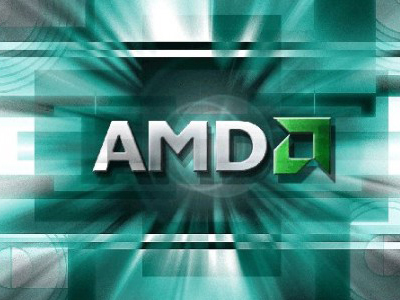AMD Bridges Gap Between PC, Next-Gen Consoles
AMD is blurring the lines between PC and consoles.
For PC gamers, the fact that the upcoming PlayStation 4 and Xbox One consoles use a custom-built APU developed by AMD – along with Sony and Microsoft for their respective consoles -- should be good news. The move is part of AMD's Unified Gaming Strategy which was revealed back in March, and the company says it is working with developers to write games that can run across PCs, mobile devices and through the cloud. No more of that "porting" crap.
AMD reportedly talked more about this strategy during Computex 2013 in Taipei last week, and will likely talk even more about it during E3 2013 (we'll be all over it too). The company hinted that there should be a better level of uniformity across all three platforms because they're based on x86 CPU and GPU cores – the current Xbox 360 and PlayStation 3 use custom chips that are not x86-based.
That said, with the Xbox One, PlayStation 4, and AMD Jaguar/Radeon-based desktops and notebooks, AMD and developers now have the opportunity to break the barriers that divide PC and consoles, to unite them into one playing field. Intel/Nvidia rigs can even participate to some degree although not as natively as AMD.
"If we can create a gaming experience on the console and client as well as in the cloud... we're going to build our brand, we're going to build our market share, we're going to win," said Matt Skynner, corporate vice president and general manager of the graphics division at AMD.
Lisa Su, senior vice president and general manager of AMD's Global Business Units, added that the company's next-generation PC processor, code-named Kaveri and its fastest to date which will ship to PC makers later this year, could also be a step forward in blurring the lines between PC and console although the results could be a few years out.
AMD's Kaveri will be the company's first chip based on the specification established by the AMD-led Heterogeneous System Architecture, or HSA. It aims to make applications portable across a number of devices including PC, tablet, smartphone and game console. The chip will also feature a new technology called Heterogeneous Uniform Memory Access, or hUMA, which allows CPUs and GPUs to have access to pooled memory resources in a system.
"It is absolutely the end goal to create a development ecosystem where first-party games will be written to the games consoles first ... but providing the capability to leverage that investment into PC market, into mobile form factors, into cloud. Definitely there's that desire," Su said.
Get Tom's Hardware's best news and in-depth reviews, straight to your inbox.
She said AMD is working with developers to expand the number of applications compatible with HSA. Because games are typically built on PC first anyway, HSA can help broaden the number of applications that work with AMD-based chips across different devices (like PC/XB1/PS4). HSA will also act as a pivot to define the games and performance relative to the device, she said.
We're actually interested to hear what Intel and Nvidia – who currently don't have a presence in the console market -- has to say about the PC/console union via AMD.

Kevin Parrish has over a decade of experience as a writer, editor, and product tester. His work focused on computer hardware, networking equipment, smartphones, tablets, gaming consoles, and other internet-connected devices. His work has appeared in Tom's Hardware, Tom's Guide, Maximum PC, Digital Trends, Android Authority, How-To Geek, Lifewire, and others.
-
soldier44 Well this is good news but I game with the very best the pc has to offer every year. I spend the money to make sure I have the best visuals money can buy. I game at 2560 x 1600 everything maxed currently with 2 GTX 780s in SLI and a 4770k @ 4.7 512gb SSD and it can't be beat not even by both supposed next gen consoles combined into one. I love seeing the fanboy kiddies praise these new consoles thinking they beat out PCs. Good laugh.Reply -
madjimms Hope everyone bought AMD stock when I told them to a year ago... They have some damn good business strategies, they just need time to pan out.Reply
EDIT: You people are correct about the year ago part, more like 6 months give or take. But I expect AMD's revenue to climb steadily. (and I don't actually own any stocks) -
sarinaide Very exciting times for AMD systems architecture, instead of outright performance war they have done what smart business is about and that is securing portfolios, APU technology is the in thing now and its flexible enough for AMD to integrate this into every market sector with what is tremendous success.Reply -
goodguy713 what I really want to see is true cross platform gaming pc players can play against ps4 players and xbox1 players that would be the next best thing .. im so tired of having a group of friends here and another group on another system .. baring the exclusive titles .. but still fact of the matter is games like bf3 or the upcoming bf4 would really get a lot of benefits that way ..I really wish I could play against my friends on ps3 ... or xbox.. that's what would be really cool and interestingReply -
steven785 Reply10945251 said:Well this is good news but I game with the very best the pc has to offer every year. I spend the money to make sure I have the best visuals money can buy. I game at 2560 x 1600 everything maxed currently with 2 GTX 780s in SLI and a 4770k @ 4.7 512gb SSD and it can't be beat not even by both supposed next gen consoles combined into one. I love seeing the fanboy kiddies praise these new consoles thinking they beat out PCs. Good laugh.
Well a console is a one time investment of $500 not $2k+ each year. Add up the savings. The xbox 360 came out around in 2005 and cost $500. For the past 7 years you can play most of the mainstream games at playable resolutions. How you spend your money is your problem but spending $14k just to brag is pretty pointless. Also upgrading each year is pretty useless and a waste of money when my i5-3570 and gtx 670's in sli can run everything now on max at that 2560. I love seeing pc fanboys praising how they waste there money each year on pointless upgrades.
edit: Also 2 780s in sli is not the best money can buy. And for someone like you, why do you only play on one monitor if money is no object for you? -
acerace Reply10945251 said:Well this is good news but I game with the very best the pc has to offer every year. I spend the money to make sure I have the best visuals money can buy. I game at 2560 x 1600 everything maxed currently with 2 GTX 780s in SLI and a 4770k @ 4.7 512gb SSD and it can't be beat not even by both supposed next gen consoles combined into one. I love seeing the fanboy kiddies praise these new consoles thinking they beat out PCs. Good laugh.
My BS sense is tingling. It also said that you don't have that kind of PC, judging by your previous posts. -
codo dont be salivating over your prey wishing for cross platform play- if it ever does happen it will mean the banning of mouse & keyboard for PC games. regardless, I dont have high hopes, amd has always been a second tier company- in a two horse race.Reply -
chimera201 developers ignored the pc platform not because the consoles had a different hardware architecture, but because pc platform had the highest piracy and will still have the highest piracy. Games are developed on pc not on the consolesReply
